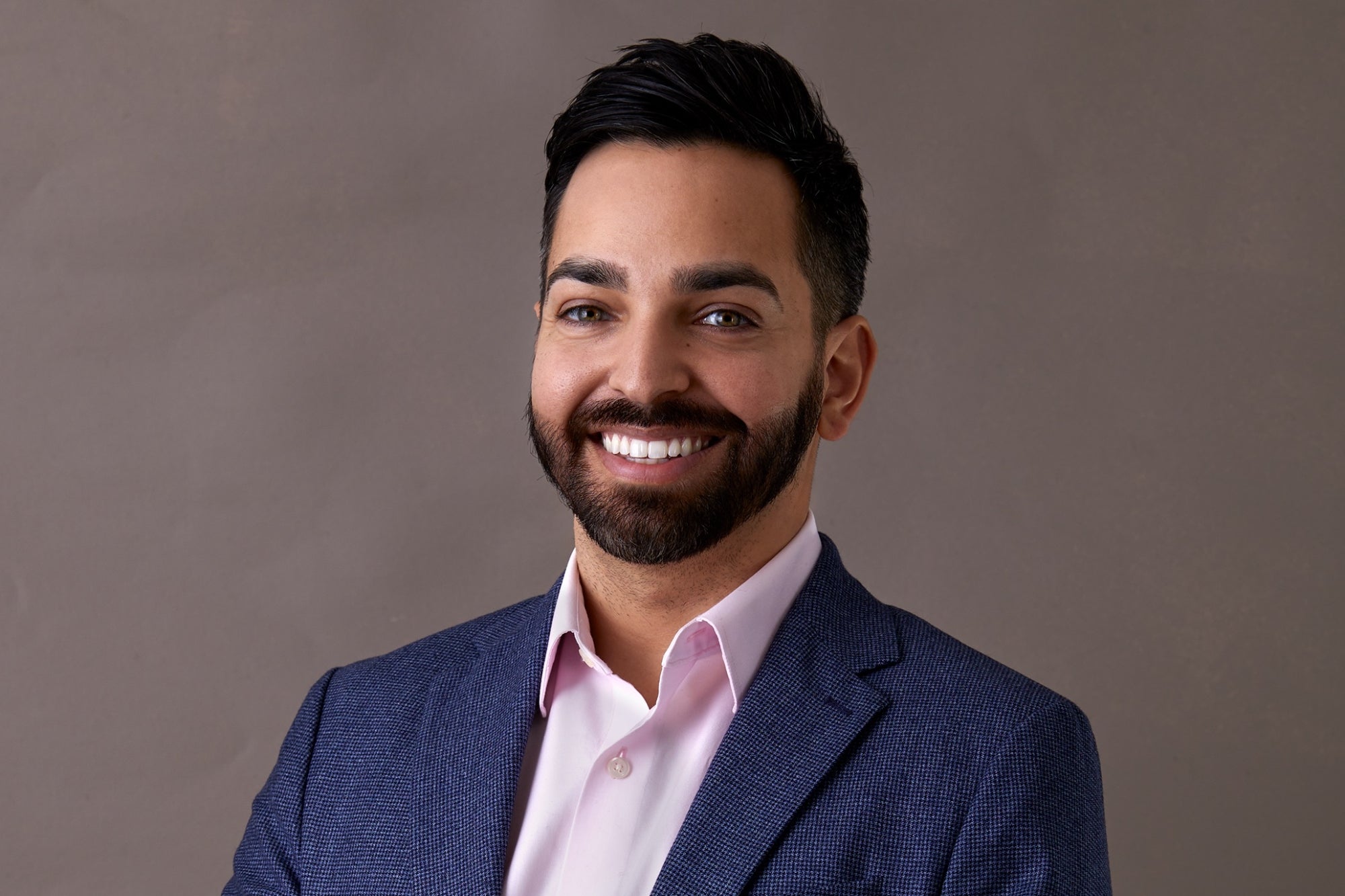With more than 12 million followers, Dr. Muneeb Shah (@dermdoctor) is one of the most influential creators on TikTok today. If you’re among his massive fanbase, you know that Shah’s content is as entertaining and as it is informative. “This all started as just a way to have fun,” Shah told Entrepreneur during a recent IG Live interview. “But I soon learned that this content is a way to bring healthcare education to millions of people who lack the resources to get it otherwise.”

Derm Doctor
Shah, whose content can also be found on Instagram and YouTube, spoke with Entrepreneur director of social media Sana Ali to break down the creative, educational and business aspects of what he does and provide inspiration and behind-the-scenes tips for future viral stars. You can watch the video here and read the takeaways below, which have been edited for length and clarity.
How he got started
“In the early days of the pandemic, I became a TikTok consumer. TikTok is super addicting, and there are all these trends and sounds that help you be really creative. So I actually just started creating content for fun, and then the videos started to take off. It was definitely something unintentional. At one point, I made an educational video and realized from the positive response that there was a huge white space for good information on skincare and dermatology.”
Related: How to Integrate TikTok Into Your Video Marketing Strategy
Timing is everything
“During the pandemic, people were spending a lot of time on Zoom, looking at their own face, thinking, ‘Okay, I have this extra time. How can I actually get healthier skin?’ And instead of focusing on covering things up, I think a lot of people were trying to actually heal their skin. So you saw just a huge spike in interest in skincare at the same time that I incidentally started creating content about skincare.”
His advice for newbies
“I actually left my old videos up just so that people could go back and see how it all started. I was holding the mic piece to my iPhone and basically just using a lamp in front of me as my front light. There was no thought process about production values at all. I was just having fun and creating content that I thought would resonate with people. So I would advise people to just create whatever they think is good for them and good for the community around them. In the beginning, it’s the best time because you can totally be yourself and be free.”
When it became something more than a hobby
“There is a real access issue in the United States with healthcare. In certain areas, you cannot see a dermatologist; you don’t have access to the types of physicians you need…so there is this massive gap of information that needs to be filled. So when I started to create content that went viral about specific diseases, that’s when I realized that I can educate so many people. My mentor said, ‘You just educated five million people about hidradenitis suppurativa, which would take a lifetime to do in person.’ That’s when I realized that this is really important and something to integrate into my life long-term. That’s when I kind of pivoted to actually making a real platform out of it and expanded into YouTube.”
Related: 6 Tips to Grow Your Business on TikTok With Ads and Influencers
His global reach
“I recently went to the American Academy of Dermatology conference in Boston. Dermatologists from around the world go to it, so I met doctors from places like Brazil, Panama, Paraguay and Chile. And they said, ‘Our patients showed us some of your videos and were asking questions about some of the things that you were talking about.’ It really is fascinating to see the reach that you can have as an educator on these platforms — how you can get information out around the world that a lot of people have trouble accessing.”
On his process
“There’s content that can take me four hours to create, and some that just takes a few minutes. It depends on what it is. So there’s a video I did — and it was only like a minute long — where I went to LA. That involved hours of me personally using Adobe Premiere to make all those sounds line up and all the images just to hit on the beat and everything. But if you ever see me wearing a headband in my video, that means that that video was made with me in bed, about to go to sleep, and I saw something that I felt like I needed to react to or respond to. And I literally roll out of bed, shoot the video in like 20, 30 seconds and then go back to bed.”
Why YouTube matters
“We are investing a lot of energy in YouTube. We like it because it’s searchable. So if viewers around the world have a question like ‘How do I treat acne?’ they can type it in and videos will come up. So we create videos that go through very systematic, evidence-based ways to approach different skin conditions. That YouTube stuff will take you like eight hours, nine hours to make per video.”
On his impact
“There’s been a lot of comments on my videos that have been amazing. Someone will tell me that they went to get a mole checked out because of something they learned from my videos. They’ll tell me, ‘It ended up being an early melanoma, and I would’ve never gone in if you didn’t make that content.’ And so that to me, it is like, ‘Wow!’ It is incredible. If I read a comment like that at a time where like I’m feeling a little discouraged or tired or exhausted, it makes me feel like, ‘Okay, this, this actually has the purpose, and I need to keep going.’”
